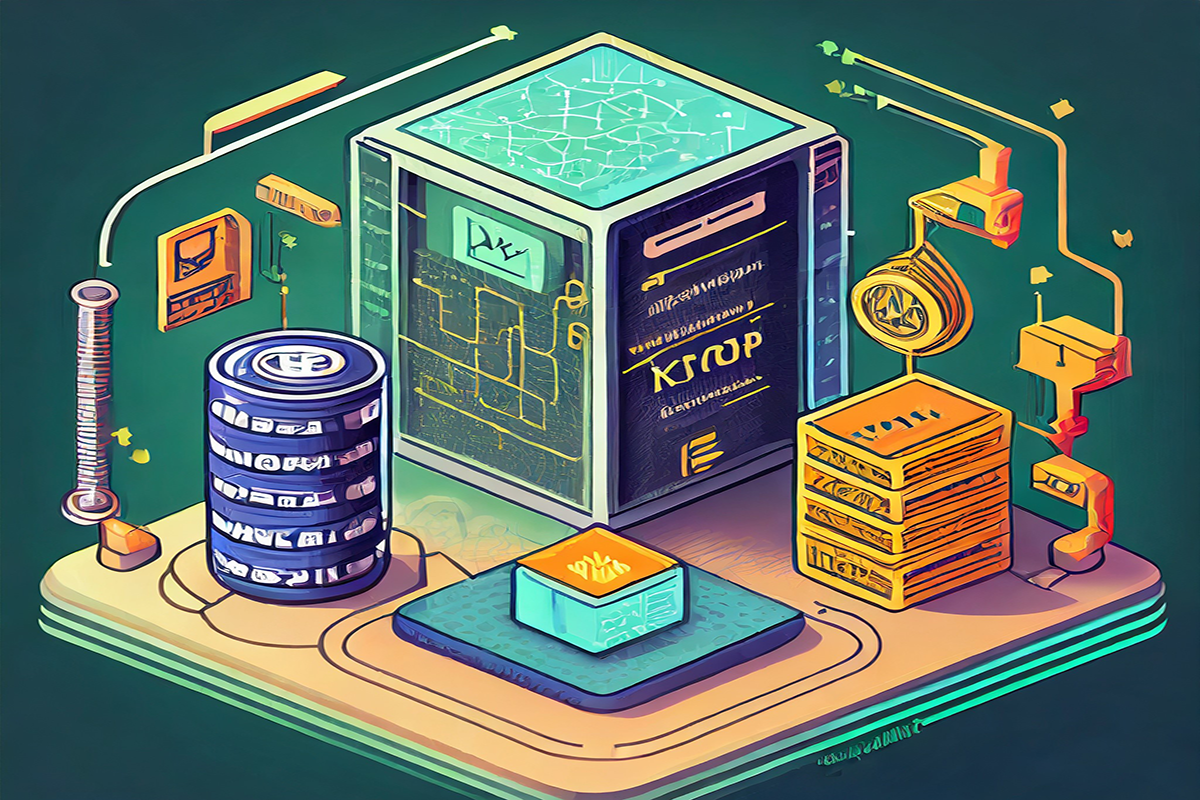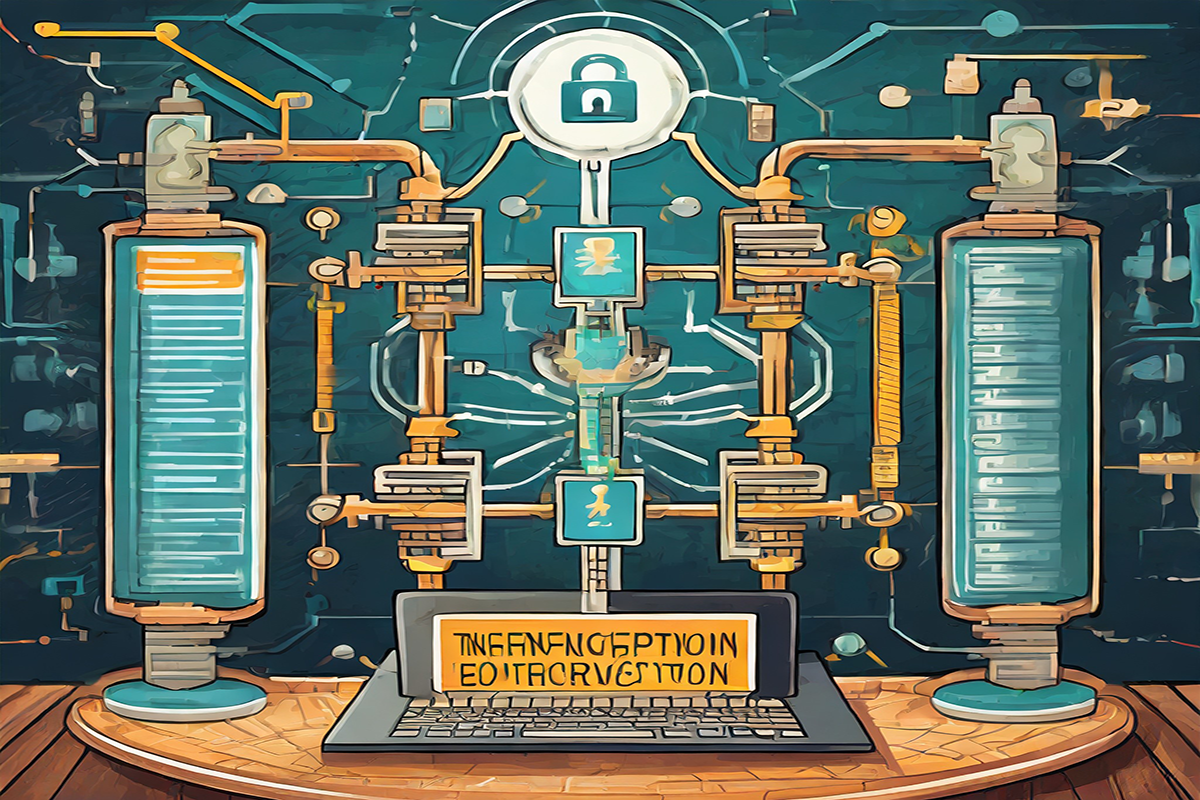Tokenization and encryption are both vital data security techniques, each with its advantages and drawbacks. Tokenization involves substituting sensitive data with non-sensitive tokens, making it ideal for scenarios where you need to process transactions without retaining access to the original data. Encryption, on the other hand, transforms data into unreadable ciphertext, ensuring data protection during transmission or storage while allowing for decryption when needed. The choice between them depends on your specific security needs, compliance requirements, operational considerations, and available resources.
Understanding Tokenization

What is Tokenization?

Tokenization is a data security technique that involves substituting sensitive data with a non-sensitive equivalent, known as a token. This token is usually a random string of characters and is generated using an algorithm. The original data, which can include credit card numbers, social security numbers, or other personal information, is securely stored in a separate database. At the same time, the token is used for transactions and data processing.
How Does Tokenization Work?
- Data Input: When sensitive data is provided, such as during a payment transaction, the system intercepts it.
- Token Generation: An algorithm generates a token that has no direct correlation with the original data.
- Storage: The original data is securely stored in a separate, highly protected database.
- Token Usage: The token is used for processing and transaction purposes while the original data remains safe and inaccessible.
Advantages of Tokenization
1. Enhanced Security
- Tokens have no inherent value on their own, making them useless to potential attackers.
- The original data is kept in a secure location, reducing the risk of breaches.
2. Simplified Compliance
- Helps organizations comply with data protection regulations by reducing the storage of sensitive data.
3. Streamlined Operations
- Faster processing of transactions as tokens is easier to handle.
Understanding Encryption

What is Encryption?
Encryption is the process of converting plaintext data into an unreadable format (ciphertext) using an algorithm and an encryption key. To decrypt the data, the recipient must have the appropriate decryption key. Encryption is widely used to protect data during transmission and storage.
How Does Encryption Work?
- Data Encryption: The plaintext data is transformed into ciphertext using an encryption algorithm and a key.
- Transmission or Storage: The ciphertext is transmitted or stored securely.
- Data Decryption: To access the original data, the recipient uses the decryption key to reverse the encryption process.
Advantages of Encryption:
1. High-Level Security
- Encryption ensures that even if data is intercepted, it remains unreadable without the decryption key.
2. Versatility
- It can be applied to various types of data, including files, emails, and messages.
- Protects data from unauthorized tampering.
Tokenization vs. Encryption: Which Is Ideal?
1. Data Transformation:
- Tokenization: Tokenization involves substituting sensitive data with non-sensitive tokens. The original data is securely stored in a separate database, and only tokens are used for processing. Tokenization doesn’t mathematically transform data but replaces it with unrelated values.
- Encryption: Encryption transforms sensitive data into ciphertext using an algorithm and a key. To decrypt and access the original data, the recipient must possess the decryption key. Encryption mathematically alters the data, making it unreadable without the key.
2. Use Cases:
- Tokenization: It is ideal when you need to process transactions without retaining access to the original data. Common use cases include payment processing in retail and securing data in a way that meets compliance requirements.
- Encryption: Encryption is more versatile and suitable when you need to protect data during transmission or storage while retaining the ability to decrypt and access the original data. It is commonly used for securing emails, messages, files, and data-at-rest scenarios.
3. Security:
- Tokenization: Tokenization offers robust security because tokens have no inherent value on their own. However, it’s crucial to secure both the tokenization system and the database that stores the original data.
- Encryption: Encryption provides high-level security, ensuring that even if data is intercepted, it remains unreadable without the decryption key. The strength of security depends on the encryption algorithm and key length used.
4. Compliance:
- Tokenization: Tokenization simplifies compliance with data protection regulations because it reduces the scope of sensitive data storage. This makes it easier to meet various compliance requirements.
- Encryption: Encryption may have more complex compliance requirements, particularly regarding key management, depending on the type of data and industry. Compliance may vary based on the specific regulations governing your organization.
5. Performance:
- Tokenization: Tokenization is generally faster for transaction processing because it involves replacing data with tokens, which are easier to handle. It minimizes computational overhead.
- Encryption: Encryption may introduce some overhead due to the encryption and decryption processes. However, modern hardware and optimized encryption algorithms have minimized this performance impact.
6. Resource Requirements:
- Tokenization: Implementing tokenization requires a secure database for storing original data and a tokenization system. It may be more straightforward to set up and manage compared to encryption, depending on the use case.
- Encryption: Encryption necessitates robust key management and may require more resources in terms of hardware, software, and expertise. Proper key handling is critical for maintaining security.
7. Data Integrity:
- Tokenization: Tokenization doesn’t inherently protect data integrity. It primarily focuses on data confidentiality by replacing sensitive information with tokens.
- Encryption: Encryption safeguards both data confidentiality and data integrity. It ensures that data remains unchanged during transmission or storage, preventing unauthorized tampering.
8. Data Recovery:
- Tokenization: Data recovery is relatively straightforward as the original data is securely stored in a separate database. Retrieving the original data is possible if needed.
- Encryption: Data recovery can be more complex with encryption, especially if the decryption key is lost or compromised. Losing the key may result in permanent data loss.
Drawbacks of Tokenization and Encryption:
Drawbacks of Tokenization
1. Limited Use Cases
If you require the ability to retrieve and use the original data frequently, tokenization may not be the most practical choice.
2. Implementation Complexity
Setting up a tokenization system can be complex and may require changes to existing software and databases. It demands careful planning and integration into your existing infrastructure.
3. Potential for Data Leakage
If not implemented correctly, tokenization systems can inadvertently expose sensitive information. For example, if the tokenization process is not adequately protected, an attacker might reverse-engineer the token to reveal the original data.
Drawbacks of Encryption
1. Complexity
Encryption, especially strong encryption, can be computationally intensive. This complexity can lead to slower data processing and transmission, impacting system performance.
2. Key Management Challenges
Effective key management is crucial for encryption. Losing encryption keys or having them fall into the wrong hands can result in permanent data loss or unauthorized access.
3. Data Recovery Issues
In cases where encryption keys are lost or forgotten, data recovery can be nearly impossible. This can be a significant problem for individuals and organizations that rely heavily on encryption.
Making the Right Choice:
The choice between tokenization and encryption depends on your specific security requirements and use cases. In many situations, a combination of both techniques can provide comprehensive data protection.
- Data Sensitivity: If data is highly sensitive, encryption might be the better choice.
- Compliance Requirements: Check the legal and industry-specific regulations you must adhere to, as they may influence your decision.
- Operational Needs: Consider the practical aspects of implementing tokenization or encryption in your systems, including performance and user experience.
- Resource Availability: Assess your organization’s capabilities in terms of technology, infrastructure, and expertise to implement and manage either method effectively.
Conclusion:
The choice between tokenization and encryption hinges on a careful assessment of your unique security needs and operational considerations. Tokenization offers a robust solution for scenarios where you need to process transactions efficiently while keeping sensitive data secure. It is a strong choice for use cases like retail payment processing. On the other hand, encryption provides unparalleled versatility. It is ideal for safeguarding data during transmission or storage while still allowing access to the original data when necessary, making it suitable for securing various data types. Both techniques have their advantages and drawbacks, so a well-informed decision should be made after considering factors such as data sensitivity, compliance requirements, operational capabilities, and resource availability.
Frequently Asked Questions:
What is the primary difference between tokenization and encryption?
Tokenization involves substituting sensitive data with a non-sensitive equivalent (token), while the original data is securely stored separately. Encryption, on the other hand, transforms data into an unreadable format (ciphertext) using an algorithm and key, which can be decrypted to retrieve the original data.
When should I use tokenization?
Use tokenization when you need to process transactions efficiently without retaining access to the original data. It’s ideal for scenarios like secure payment processing, where the actual data isn’t needed beyond the transaction.
When is encryption the better choice?
Encryption is suitable when you need to protect data during transmission or storage and still require access to the original data at some point. It’s commonly used for securing emails, messages, files, and sensitive data in general.
Which offers higher security, tokenization, or encryption?
Both tokenization and encryption offer high levels of security when implemented correctly. Tokenization ensures the original data is inaccessible, while encryption requires the decryption key to access the data. The strength of encryption depends on the chosen algorithm and key length.
Are there any performance differences between tokenization and encryption?
Tokenization is generally faster for transaction processing because it involves replacing data with tokens, which are easier to handle. Encryption may introduce some overhead due to the encryption and decryption processes, but modern hardware and algorithms have minimized this impact.
